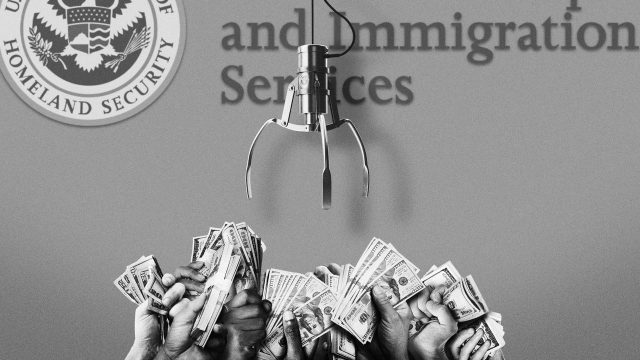
President Donald Trump has struck another blow against immigration. His White House has imposed a new $100,000 fee on H-1B visas that American companies use to bring top talent from overseas. Experts suggest U.S. workers may not benefit from the change.
Friday’s “abrupt” announcement “stunned and confused employers, students and workers” around the world, said The Associated Press. The affected businesses — including tech giants like Amazon, Meta, Microsoft and Tesla — “don’t actually know what that process will be like,” said León Rodríguez, a former U.S. immigration official. The White House defended the move. The H-1B visa program was being used by American companies to “fire their American staff and outsource IT jobs to lower-paid foreign workers,’’ the administration said.
Why is Trump changing the H-1B?
The argument for making H-1B visas harder to get is that “big technology companies shouldn’t be spending billions to train and import foreign employees,” said The Dispatch. Trump’s most hawkish anti-immigration allies like Steve Bannon and Laura Loomer have called for an end to the program, focusing particularly on Indian migrants who make up more than 70% of H-1B recipients. “How is it America First to let Indians replace America’s top talent?” Loomer asked last year. The H-1B program was capped at 85,000 visas a year. With the new fee, the president is “essentially saying that the number is too high,” said Hiroshi Motomura, co-director of UCLA’s Center for Immigration Law and Policy.
Will American workers really benefit?
“Economists aren’t so sure,” said The Wall Street Journal. Some research suggests H-1Bs helped U.S. workers and the overall economy “far more than it has hurt.” The visas “cause innovation, they cause entrepreneurship, they cause more R&D investment,” said George Mason University economist Michael Clemens. But others argue the program has displaced American workers. “The typical H-1B visa employee” is usually doing a job for which “otherwise available workers exist,” said University of Notre Dame economist Kirk Doran.
The fee “threatens to worsen a shortage of U.S. doctors,” said Bloomberg. The visa program has produced a “pipeline” of trained doctors, “especially in rural and underserved communities,” said American Medical Association President Bobby Mukkamala. International medical school graduates are a “critical part of our physician workforce.”
What next?
Trump has “scrambled a popular path” between the United States and India, said The New York Times. Making visas more difficult to obtain could “dent India’s economy” by reducing the money migrants send home and might result in “weakened ties between Indian and American companies.” While American tech companies are “globe-spanning behemoths,” India has produced more English-speaking engineers and scientists than “any other country.”
Trump’s new fee is a “significant opportunity for Canada,” said Bloomberg. “Cities like Vancouver or Toronto will thrive instead of American cities,” said Garry Tan, CEO of Y Combinator. Europe is also poised to reap the benefits, said CNBC. The continent’s nations may be the “beneficiaries of a potential rigorous brain drain,” said Paul Achleitner, former chair of Deutsche Bank’s supervisory board.
American workers might see gains. But there are drawbacks.






